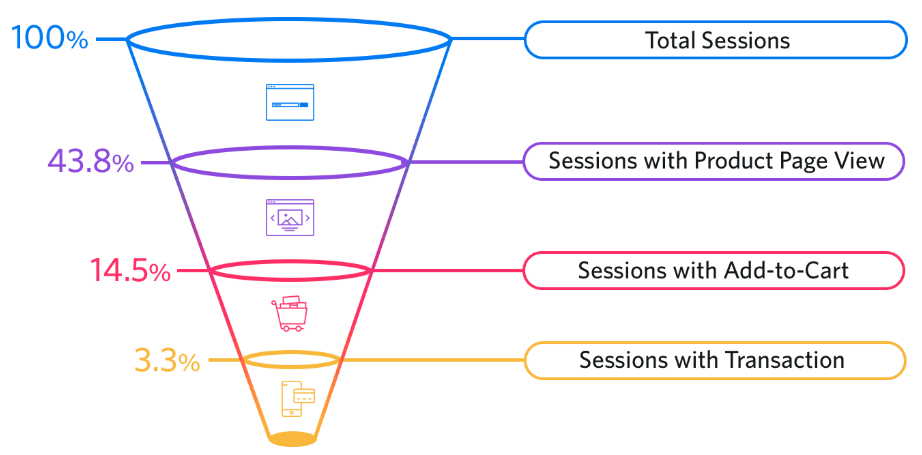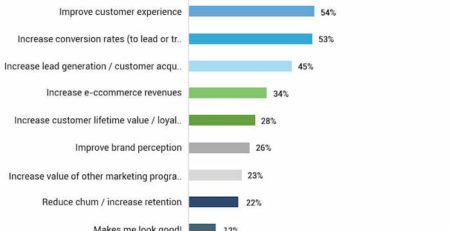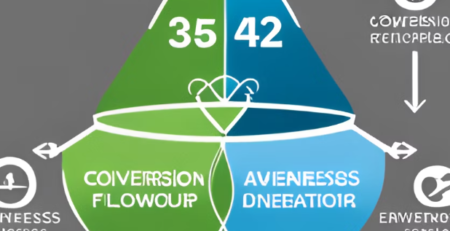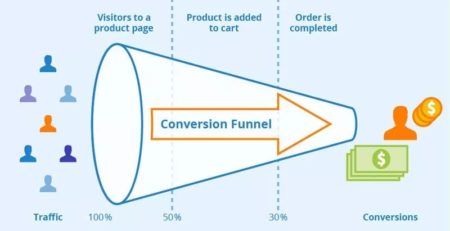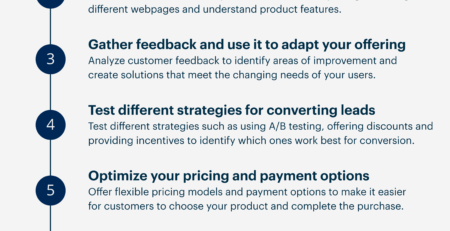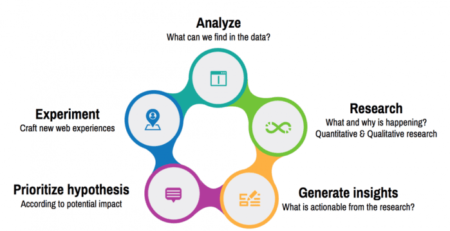How To Increase Conversion Rate Ecommerce?
Are you an ecommerce business owner looking to boost your sales and grow your online presence? Wondering how to increase your conversion rate and turn more visitors into satisfied customers? Well, you’ve come to the right place! In this article, we’ll explore some effective strategies and tips on how to increase conversion rates in ecommerce. So grab a seat, get ready to learn, and let’s dive in!
Picture this: you have a fantastic online store with great products, but for some reason, your visitors aren’t completing their purchases. Frustrating, right? That’s where increasing your conversion rate comes in. It’s all about optimizing your website, making it more attractive and compelling for your potential customers. By doing so, you’ll be able to persuade them to take action and buy your products.
Now, you might be wondering, “How do I do that?” Don’t worry, we’ve got you covered! In the upcoming paragraphs, we’ll reveal some tried-and-true techniques that are sure to make a positive impact on your ecommerce conversion rates. From improving your website’s loading speed to enhancing your product descriptions and implementing persuasive call-to-actions, we’ll cover it all. So let’s get started on this journey to boosting your ecommerce conversion rates!
- Analyze your current conversion rate
- Identify and understand your target audience
- Optimize your website’s design and user experience
- Streamline the checkout process
- Implement persuasive product descriptions and compelling visuals
- Offer incentives and discounts
- Utilize customer reviews and social proof
- Monitor and test your strategies regularly
- Refine and iterate based on data and feedback
Follow these steps to boost your ecommerce conversion rate and drive more sales!
How to Increase Conversion Rate in Ecommerce: Strategies for Success
Are you looking to boost your conversion rate in ecommerce? Look no further! In this article, we will explore effective strategies that can help you increase your conversion rate and drive more sales. From optimizing your website design to implementing persuasive copywriting techniques, we have got you covered. Read on to discover the secrets to maximizing your ecommerce conversions and taking your online business to new heights!
The Power of User Experience: Design and Navigation
When it comes to ecommerce, user experience (UX) plays a crucial role in driving conversions. Your website’s design and navigation should be intuitive and visually appealing, creating a seamless journey for your customers. Start by optimizing your product pages – make sure they load quickly and showcase high-quality images with detailed descriptions. Organize your products into categories, making it easy for users to find what they are looking for. Additionally, implement a user-friendly search function that allows customers to search for specific items.
Another important aspect of UX is mobile optimization. With more and more people shopping on their smartphones, it’s essential to have a responsive website design that adapts to different screen sizes. Test your website on various devices to ensure a smooth experience for your mobile users. Additionally, integrate secure and convenient payment options, such as PayPal and Apple Pay, to streamline the checkout process and reduce cart abandonment rates. By prioritizing user experience, you can improve conversions and ultimately increase your bottom line.
In summary, optimizing your website’s design and navigation is crucial for increasing conversions in ecommerce. Focus on creating a visually appealing and user-friendly experience that showcases your products effectively while also ensuring mobile responsiveness and easy checkout processes.
The Art of Persuasive Copywriting: Captivating Your Audience
In ecommerce, your copywriting can make all the difference when it comes to converting visitors into customers. Persuasive product descriptions can engage your audience and encourage them to make a purchase. Start by identifying your target audience and understanding their needs and desires. Craft compelling product descriptions that highlight the benefits and unique selling points of your products. Use persuasive language and storytelling techniques to create an emotional connection with your audience.
Another key element of persuasive copywriting is incorporating social proof. Positive reviews and testimonials from satisfied customers can build trust and credibility, making it more likely for others to convert. Display customer reviews prominently on your product pages and consider implementing a rating and review system. Additionally, leverage the power of scarcity and urgency by using phrases like “limited time offer” or “only a few left in stock” to create a sense of urgency and drive conversions.
Lastly, don’t forget the importance of effective calls to action (CTAs). Your CTAs should be clear, concise, and action-oriented. Use buttons with strong verbs like “buy now” or “add to cart” to prompt users to take the desired action. Experiment with different CTA placements and colors to find what works best for your audience. With persuasive copywriting, you can captivate your audience and increase your conversion rate in ecommerce.
1) Utilize Conversion Rate Optimization (CRO) Techniques
In order to optimize your conversion rate, it is important to utilize Conversion Rate Optimization (CRO) techniques. CRO involves analyzing user behavior on your website and making data-driven changes to improve conversions. Start by setting up conversion tracking to gather valuable insights about your website visitors’ actions and behaviors. Tools like Google Analytics provide valuable data that can help you identify areas for improvement.
Once you have gathered data, conduct A/B tests to compare different versions of your website or specific elements such as headlines, CTAs, or layout. Analyze the results to determine which version performs better in terms of conversions. This iterative approach allows you to continuously improve your website and optimize the user experience.
In addition to A/B testing, consider implementing personalization techniques. Tailoring the user experience based on individual preferences and behaviors can significantly impact conversion rates. Offer personalized recommendations, dynamic pricing, and targeted messaging to create a more engaging experience for your audience.
2) Optimize Loading Speed for Better User Experience
One of the top reasons for high bounce rates in ecommerce is slow loading speed. In today’s fast-paced world, customers expect websites to load quickly, or they will simply move on to your competitors. To ensure a fast loading speed, optimize your website’s performance by minimizing file sizes, compressing images, and leveraging browser caching. Use tools like Google PageSpeed Insights to identify areas for improvement and implement the recommended changes.
Another way to improve loading speed is through content delivery networks (CDNs). CDNs distribute your website’s content across multiple servers worldwide, ensuring that your website loads quickly for visitors, regardless of their geographical location. This is especially important for international ecommerce businesses.
Remember, a fast loading speed not only improves the user experience but also positively impacts your search engine rankings. Google, for example, considers loading speed as one of the ranking factors. By optimizing your loading speed, you can attract more visitors and increase the chances of converting them into customers.
3) Implement Retargeting Campaigns to Re-engage Abandoned Carts
Abandoned carts are a common challenge for ecommerce businesses. However, they also represent an opportunity for increasing conversions. By implementing retargeting campaigns, you can re-engage with users who have abandoned their carts and remind them of the items they left behind.
Retargeting works by placing a tracking pixel on your website, allowing you to show targeted ads to users who have previously visited your site. Through platforms like Google AdWords or Facebook Ads, you can create customized retargeting campaigns that display ads to these users as they browse other websites or social media platforms.
When creating retargeting ads, make sure to include compelling visuals and enticing offers that encourage users to return and complete their purchase. Additionally, consider offering incentives such as free shipping or a discount code to incentivize conversion. By strategically re-engaging with users who have shown a prior interest in your products, you can significantly increase your conversion rate.
Key Takeaways
- Make your website user-friendly with easy navigation and clear call-to-action buttons.
- Optimize your product descriptions and images to showcase the benefits and value to customers.
- Offer competitive pricing and discounts to incentivize customers to make a purchase.
- Provide social proof through customer reviews and testimonials to build trust and credibility.
- Streamline the checkout process with secure payment options and guest checkout to reduce friction.
Frequently Asked Questions
Welcome to our FAQ section on increasing conversion rates for ecommerce websites. Below, you’ll find answers to common questions that can help you boost your online sales and optimize your website for higher conversion rates.
1. How can I improve the overall user experience on my ecommerce website?
Improving the user experience on your ecommerce website is a crucial step in increasing conversion rates. Start by optimizing your website’s speed and performance, ensuring that it loads quickly and operates smoothly. Streamline your website’s navigation and make it intuitive for users to find what they’re looking for.
Another important aspect is to enhance your website’s design and layout. Make sure it is visually appealing and aligns with your brand image. Use high-quality images, clear product descriptions, and easy-to-read fonts. Lastly, optimize your checkout process by minimizing the number of steps required and offering multiple payment options to cater to different preferences.
2. How can I build trust with my website visitors to improve conversion rates?
Building trust is essential for increasing conversion rates. One effective way to build trust is by displaying customer testimonials and reviews. Showcase positive feedback and ratings from satisfied customers to provide social proof and alleviate any concerns potential customers may have.
Another trust-building strategy is to clearly display your contact information and provide excellent customer support. Make it easy for visitors to reach out to you with any questions or concerns they may have. Promptly respond to inquiries and address any issues to demonstrate your commitment to customer satisfaction.
3. What role does social proof play in improving conversion rates?
Social proof plays a significant role in increasing conversion rates. When potential customers see that others have had positive experiences with your products or services, it builds trust and credibility. Display social proof elements such as customer reviews, ratings, and testimonials prominently on your website.
You can also leverage social media by showcasing the number of followers and likes your brand has, or by featuring user-generated content from satisfied customers. Additionally, consider partnering with influencers who align with your brand to endorse your products or services and further enhance your social proof.
4. How can I optimize product descriptions to increase conversions?
Optimizing your product descriptions can have a significant impact on conversion rates. Start by writing clear and compelling descriptions that highlight the unique selling points and benefits of your products. Use persuasive language and focus on addressing customer pain points and explaining how your product can solve their problems.
Include high-quality product images from multiple angles to give customers a clear visual representation. Additionally, provide accurate and detailed information about product specifications, dimensions, materials used, and any other relevant details. Make it easy for customers to make an informed purchase decision by providing all the necessary information they may need.
5. What strategies can I use to reduce shopping cart abandonment?
Shopping cart abandonment is a prevalent issue for ecommerce websites. There are several strategies you can implement to reduce abandonment rates. Start by simplifying your checkout process and minimizing the number of steps required. Offer guest checkout options to avoid forcing customers to create an account if they prefer not to.
Another effective strategy is to clearly display shipping costs and any additional fees upfront so that customers are aware of the total cost from the beginning. Implement exit-intent pop-ups or email reminders to prompt customers who have items in their cart to complete their purchase. Finally, consider offering incentives such as free shipping, discounts, or limited-time offers to motivate customers to finalize their purchase.
How To 4X Your Shopify Conversion Rate in 2023
Summary
Boosting your ecommerce conversion rate is key to growing your online business. Start by optimizing your website’s design for a smooth and enjoyable user experience. Streamline the buying process, make it easy for customers to find what they’re looking for, and provide clear and persuasive product descriptions. Additionally, offering various payment options and implementing trust-building measures like customer reviews and security badges can help increase conversions. Don’t forget to use analytics to track and analyze your conversion rate, and experiment with different strategies to identify what works best for your specific audience. With these tips, you’ll be well on your way to improving your ecommerce conversion rate and achieving success in the digital marketplace.

